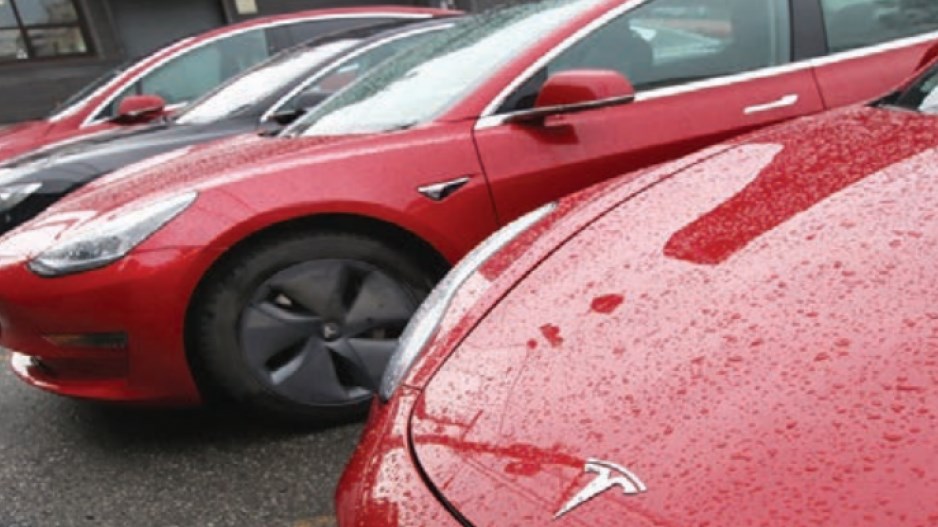Prices, used car availability and other aspects of the automobile retail market have finally started to moderate, but many changes resulting from COVID-related supply-chain bottlenecks will likely be permanent.
That is the assessment of one U.S.-based consumer advocate, who noted that dealerships increasingly carrying limited inventory on their lots and requiring customers to custom-order and wait up to a year or more for a vehicle could become the norm because it makes more economic sense for both manufacturers and retailers.
“I think you are never going back to having as much inventory at dealerships as it used to be,” said Zach Shefska, co-founder of Your Advocate Alliance (YAA), a consumer advocacy group that has amassed almost 250,000 subscribers on YouTube.
“It’s really expensive for automakers and dealers to keep hundreds of cars on dealership lots. For automakers, having no inventory means they don’t have to incentivize the purchase to move vehicles off lots and make room for new arrivals. Similarly, at dealership levels, tighter inventories allow them to charge larger markups on the vehicles they do have.”
Historically, when dealerships were trying to clear their lots in the summer to make way for new model arrivals in the fall, automakers would give them incentives to move inventory. Incentives could be as much as $10,000 per vehicle (although $1,000 to $2,000 was more typical) to allow dealers to sell to consumers at lower prices.
Since the pandemic and the microchip shortage that severely restricted worldwide car production, YAA data estimates that automakers’ incentives per vehicle have fallen by as much as 70 per cent. In short, dealers no longer need to reduce consumer prices to push cars off their lots.
Instead, consumers are told – and have increasingly accepted – that to get the vehicle they want, they must make a factory order and wait months for their cars to be built, shipped and delivered.
For Tesla Inc. (Nasdaq:TSLA), the highest-profile electric carmaker, an order of its popular Model Y SUV is estimated to potentially arrive as late as next April if ordered this month. Other popular electric models – Ford Motor Co.’s (NYSE:F) Mustang Mach-E, Hyundai’s (KRX:005380) Ioniq 5 and Volkswagen AG’s (ETR:VOW3) ID.4 – are all showing limited availability, and consumers will likely be required to factory-order them. Volkswagen’s online ordering platform had not yet opened as of Oct. 12.
This reality has led to discussions of another automotive trend created by the pandemic: Manufacturers’ direct involvement in pricing their vehicles. While the car industry traditionally let dealers set the price, Tesla’s business model of consumers ordering cars directly from the automaker at a set price has started to influence other manufacturers.
In Ford's case, the company said in September that U.S. dealers have until the end of this month to accept a new agreement that would allow them to keep selling electric cars. The agreement requires dealers to agree to set pricing by Ford.
“There was a lot of pushback from dealership associations in some parts of the country,” Shefska said. “But when other automakers look at Tesla and their market capitalization, what is the difference? The difference is that traditional automakers lose part of the value of a transaction to the dealer. These automakers don’t necessarily want all the challenges that come with owning the consumer relationship, but they do see it as a way to potentially be more profitable.”
The key for consumers in this challenging environment, Shefska noted, is to weaponize knowledge: Of the market situation, of the regulations, of consumer rights.
He noted that some companies such as Stellantis N.V. (BIT:STLA) – which manufactures and sells brands including Chrysler, Jeep, Ram, Fiat and Alfa Romeo in Canada – still offer incentives, so there are brands and models with better availability and prices if a consumer is flexible. Connecting with YAA or another consumer advocate community online to share experiences and advice can also be helpful, he added.
“It all comes down to a little bit of legwork,” Shefska said. “Don’t be uninformed going into the process, because you will end up overpaying for something when, in reality, there may be room for negotiation or another similar vehicle from another brand that has more inventory. The difference can be thousands of dollars between the informed and the uninformed.” ■




